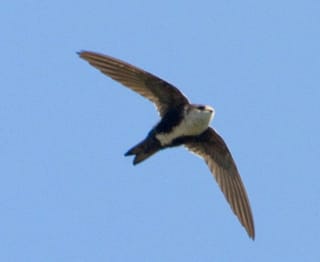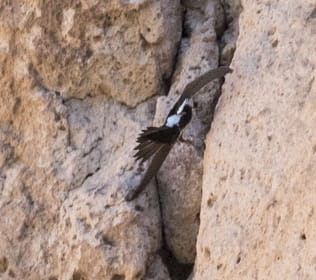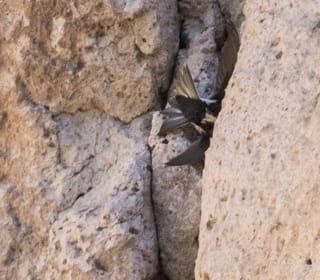Initially this guide displays common birds of all types that are flying right now in our area. Use the selectors below to view rare birds, view birds flying any time, restrict the output to a certain shape of bird, or search by name.
New Mexico is on the western edge of the Central Flyway which is one of the major migration pathways between north and south for birds traveling between breeding and wintering grounds along the Rocky Mountains. This has resulted in the state having an incredible diversity of birds with over 550 different species reported. A little more than half of this number are sighted annually on the Pajarito Plateau. Some of these birds are full-time residents, some migrate here for a few weeks or months, and other are only seen briefly as they pass through the region.
This guide features many of the birds known to frequent Los Alamos county by when they are likely to be seen in the area. You can get additional information on local birds by joining PEEC Birders or going to the eBird website. eBird also includes lists of rare bird sightings and birding hot spots.
Bird References
Birdweb
Cornell Lab of Ornithology
eBird
eNature
Institute for Bird Populations
National Audubon Society
New Mexico Ornithology Society
What Bird
xeno-canto
Subject Area Experts (all guides)
Steve Cary (butterflies)
Beth Cortright (insects)
Terry Foxx (invasive plants)
Leslie Hansen (mammals)
Richard Hansen (fish, mammals)
Dorothy Hoard (butterflies, trees)
Chick Keller (flowers, herbarium)
Shari Kelley (geology)
Kirt Kempter (geology)
Garth Tietjen (reptiles)
David Yeamans (birds)
Web Development and Content Management
Pat Bacha
Jennifer Macke
Graham Mark
Akkana Peck
Contact
Please contact us for local nature questions and sightings. We welcome comments, corrections, and additions to our guides.
For more information about local nature, please visit our Nature Blog or subscribe to PEEC This Week.
Make Selection
 Photo: adult by BJ Stacey  Photo: adult by Mouser Williams  Photo: adult by Mouser Williams |  White-throated SwiftWTSW (Aeronautes saxatalis)Family: Apodidae (Swifts) Size: 6 - 7 in (15 - 18 cm) Flies: Feb 15 - Oct 21 Morphology: noted for long, pointed, swept-back wings and long tails; adults have white throats, bellies, and rumps with black backs, wings, and tails; immatures are similar to adults but duller Status: native; locally common Food source: feed on a wide variety of flying insects, including flies, beetles, wasps, winged ants, etc. Habitat: arid mountains or other rocky areas, near cliffs and canyons White-throated Swifts are most often observed near cliffs and canyons where they may fly in small groups, chattering constantly. As a species they are one of the fastest flying birds. They forage in flight and often range widely, potentially foraging many miles from their nesting sites. Mating occurs in the air with the pair sometimes joining and then tumbling down for hundreds of feet. Nests are usually in a narrow crevice in a cliff or in a man-made structure such as a bridge, overpass, or building. The young are usually about 6 weeks old before they can fly. Info Photos Distribution Frequency |
